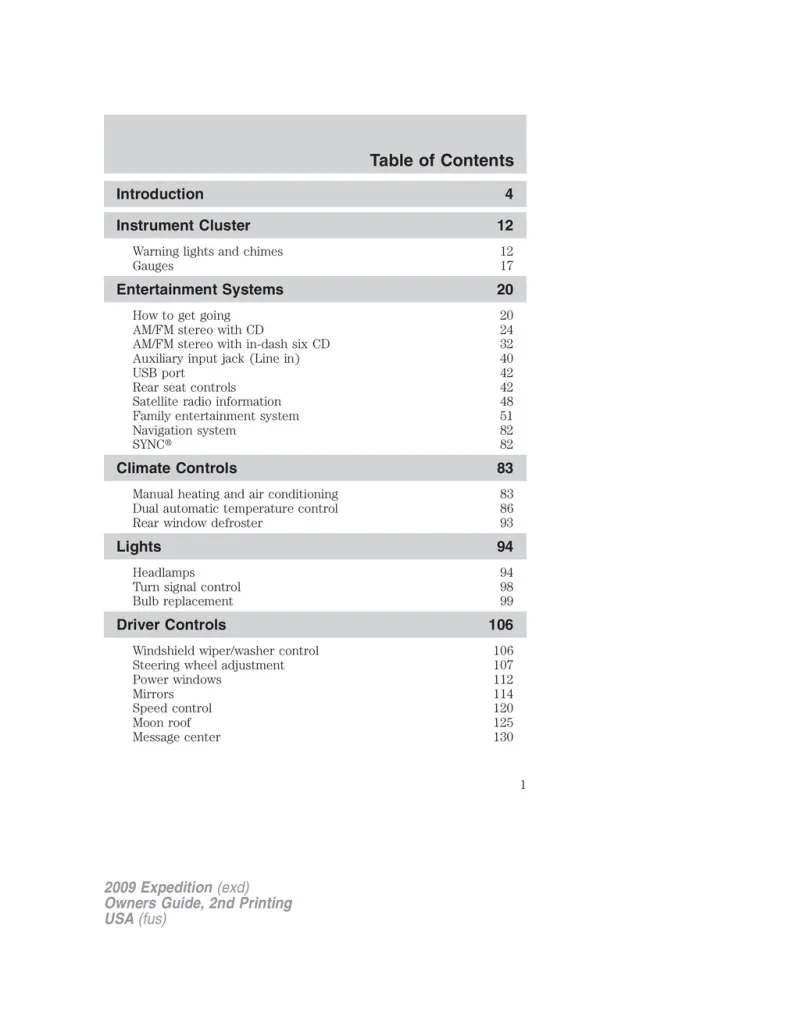2009 Ford Expedition EL Owner's Manual

Table of Contents
2009 Ford Expedition EL Overview
Introduction
The 2009 Ford Expedition EL offers an extraordinary blend of power, space, and comfort for families and adventurers alike. This extended version of the classic Expedition caters to those who require additional cargo capacity without compromising on performance. Designed to tackle both urban landscapes and rugged terrains, the Expedition EL is synonymous with versatility and reliability. With its spacious interior and robust build, it is the ideal choice for drivers seeking a full-size SUV that accommodates their lifestyle demands.
Powertrains
Under the hood, the 2009 Ford Expedition EL is equipped with a formidable 5.4-liter V8 engine that delivers 300 horsepower and 365 lb-ft of torque. This powertrain is coupled with a six-speed automatic transmission, ensuring a smooth and responsive driving experience. Buyers can opt for either rear-wheel drive or a four-wheel-drive configuration, providing optimal traction and control in various driving conditions. The Expedition EL is not just about power; it can tow up to 9,200 pounds, making it excellent for hauling trailers, boats, or heavy loads.
Trims
The 2009 Expedition EL is available in three well-equipped trims: XLT, Limited, and King Ranch. The XLT base model comes with a host of standard features, including tri-zone climate control, remote keyless entry, and a six-speaker audio system. The Limited trim enhances luxury with leather upholstery, heated and cooled front seats, and a premium audio package. The King Ranch trim tops the lineup with distinctive interior styling, wood accents, and exclusive badging, offering an upscale feel for discerning buyers.
Features
Interiors of the Expedition EL are designed for passenger comfort and convenience, with ample legroom and versatile seating configurations for up to eight passengers. Notable features include a rear entertainment system, navigation, and available Bluetooth connectivity. Safety is paramount with standard features like stability control, antilock brakes, and multiple airbags, ensuring peace of mind on every journey.
Owners Manual
The 2009 Ford Expedition EL Owners Manual provides essential information for maintaining and optimizing your vehicle. It includes detailed instructions on handling routine maintenance, understanding the various features, and troubleshooting common issues. Additionally, it offers insights on safety practices and optimum driving techniques, ensuring that every owner can maximize the SUV's capabilities and maintain its longevity.
User manual download
The Ford Expedition EL owner manual for the 2009 model year is to be found in PDF downloadable format on this page. The owner manual for the model year 2009 is free and in English, but the repair manuals are usually not easy to get and may cost more.
Manual Questions
Fill the form below and someone will help you!
